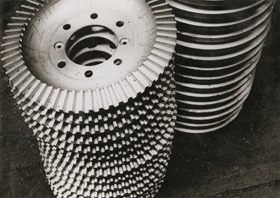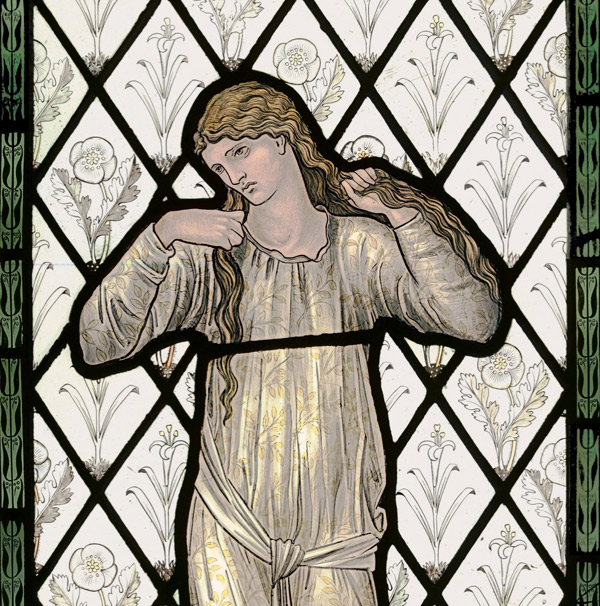Encompassing painting, sculpture, drawing, decorative art, design, photography, and printed matter, the exhibition takes an international sequence of case studies that reveals some of the faces that utopia can assume when embraced by artistic movements—from the brotherhoods of the 19th century to the avant-gardes of the period immediately following World War I. The exhibition includes loans from some of the most important museums in the world, such as the Metropolitan Museum of Art, the Solomon R. Guggenheim Museum, the Museum of Modern Art, the Brooklyn Museum, Tate Britain, and the Victoria and Albert Museum.
Fostering the ideal of a pure life
The exhibition opens in the late 18th century, when artistic groups with articulated utopian goals sprang up as self-proclaimed brotherhoods, with conscious efforts to fashion model communities. They aspired to live a pure and sometimes monastic life and to remain untouched by outside ills. In instances, this retreat was prompted by religious sentiments in reaction to the increasing secularization of the Christian Church. At times, this withdrawal was also predicated as a return to an untainted harmonious state of being. The French Primitifs (Primitives) looked to the primitivism of archaic Greek and Etruscan art and the Italian Quattrocento (15th-century). The German Nazarenes, such as Friedrich Overbeck and Franz Pforr (The Count of Hapsburg and the Priest, 1809-1810), referenced the Early and High Renaissance and painted religious scenes in an attempt to restore faith through art. The Pre-Raphaelites also quoted the past, announcing their allegiance to the art and philosophy of the time before Raphael, when guilds reigned. Among them, artists such as William Holman Hunt, John Everett Millais, and Dante Gabriel Rossetti privileged clear pictorial narratives and an artistic style inspired by the Italian fifteenth century.
A criticism of capitalism
As 19th-century progress marched forth, there was a return to craft in response to increased mechanization and to the dehumanization caused by industrial labor. This return was accompanied by the concomitant recognition that art, architecture, and design could have a role in reformulating how people lived and could serve to ameliorate society. Key proponents of this philosophy were artists connected to the Pre-Raphaelites, William Morris and Edward Burne-Jones (Elaine, 1870). Inspired largely by Ruskin’s theories, Morris was a progenitor of the Arts and Crafts movement, and advocated a system that would follow the model of collective production demonstrated by medieval guilds. In the last quarter of the century, with the momentum gained by left-wing groups, some artistic movements, such as the Neo-Impressionists, developed utopian ambitions with politicized intent, championing workers’ rights and critiquing capitalism in the very content of their art. The Neo-Impressionists saw their optical painting technique, based loosely on scientific tenets, as the vehicle to present scenes of progressive thought, uniting contemporary methods with idealistic narratives.
 Alexander Rodchenko (1891 - 1956,) Automobile AMO (Detali AMO), 1929 Silver gelatine print 16,2 x 22,9 cm A. Smuzikov Collection. Copyright Design and Artists Copyright Society 2008 Courtesy Pace/ MacGill Gallery, New York ©Estate Aleksandr Rodchenko/RAO, Moscow ©Alexander Rodchenko - by SIAE 2010
Following the advent of abstraction and the graphic horrors of World War I, artists turned toward the notion of truth as embodied in pure, abstract forms, which were equated with harmony. The founders of De Stijl, a small group of Dutch artists and architects led by Theo Van Doesburg (Counter-Composition XIII, 1925–26), believed that the formal properties of architecture, art, and design could foster harmony. The Bauhaus, a state-sponsored school of art, architecture, and design, founded in Weimar, Germany, in 1919, by architect Walter Gropius, assembled leading artists and designers of the avant-garde into a working community that could help reconstruct post-war society through art and design. The Bolshevik Revolution also pursued a utopian vision, centered on restructuring class relations. The avant-garde artists utilized the radical poetics of non-objective art. Malevich and Lissitzky were idealists who believed that form could represent grand, if vaguely expressed visions, while Tatlin, Rodchenko, and others who all called themselves Constructivists were more interested in concrete materials as bearers of value. The exhibition concludes in the early 1930s, when the ascendancy of fascism brought about the close of the Bauhaus in Berlin in 1933 and when Stalinism reframed Russian Constructivist projects. Nonetheless, up to our day, experiments persist, from artists’ colonies to ecologically self-sustaining communities: utopian ideals still matter.
To see more illustrations, click on VERSION FRANCAISE at the top of this page
PUBLICATION:
The exhibition is accompanied by a fully illustrated catalogue, published by Guggenheim Museum Publications (New York) with essays by curator Vivien Greene, historian Russell Jacoby, and design-history authority Victor Margolin.
To see more illustrations, click on VERSION FRANCAISE at the top of this page
|









